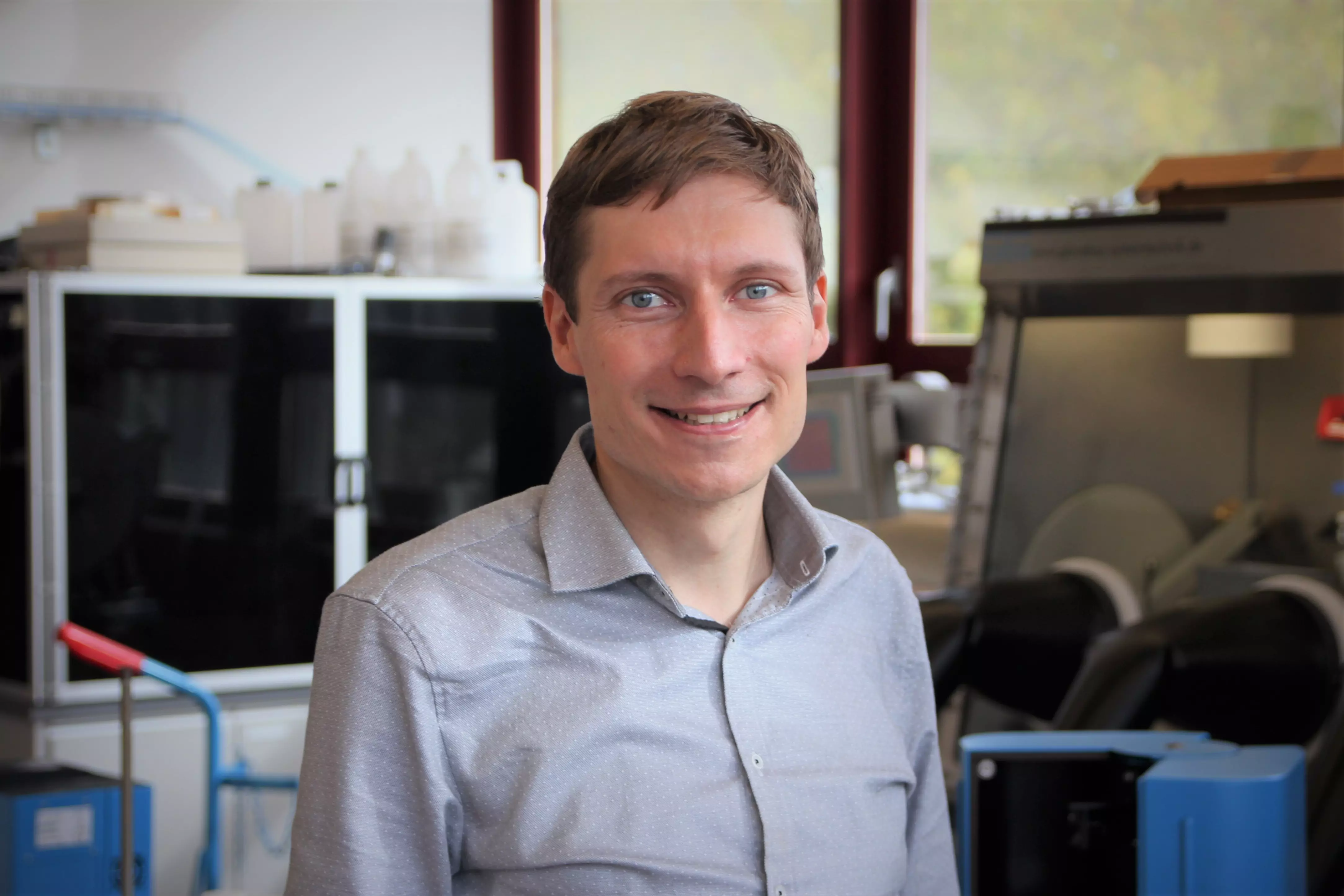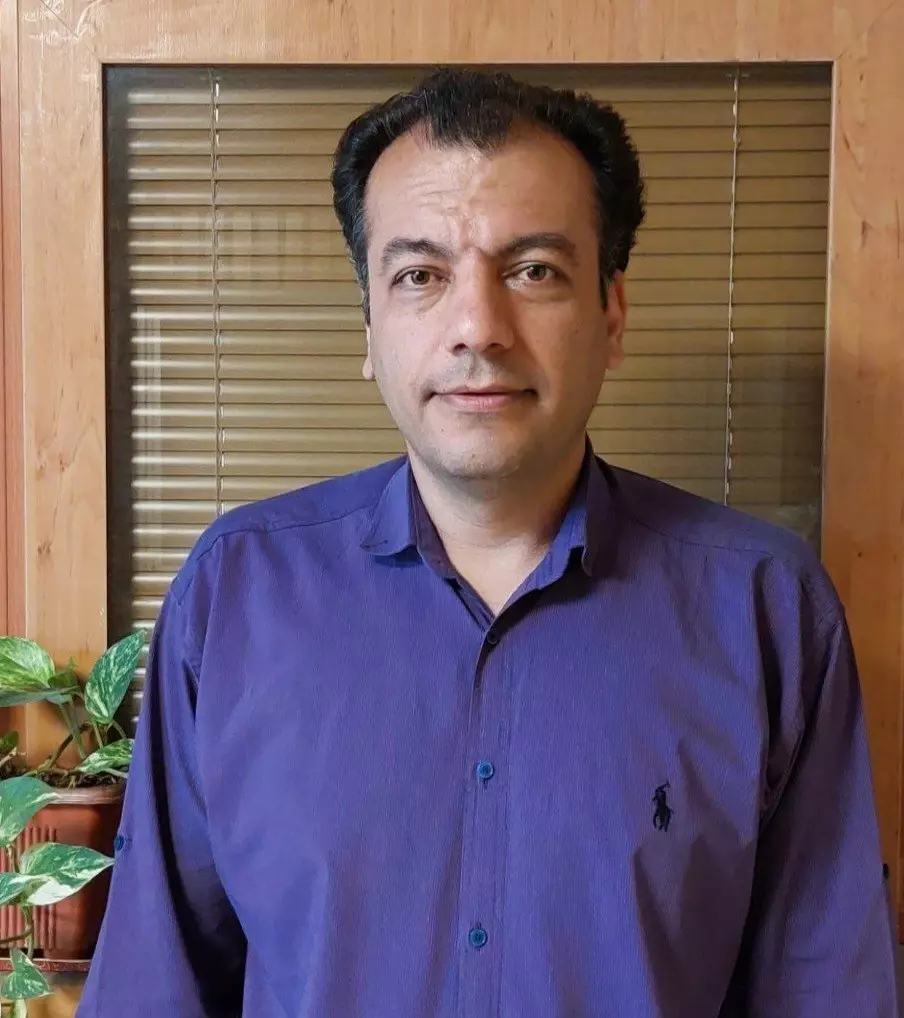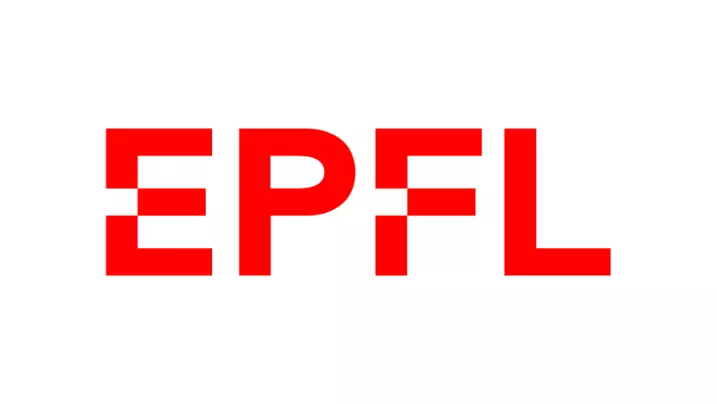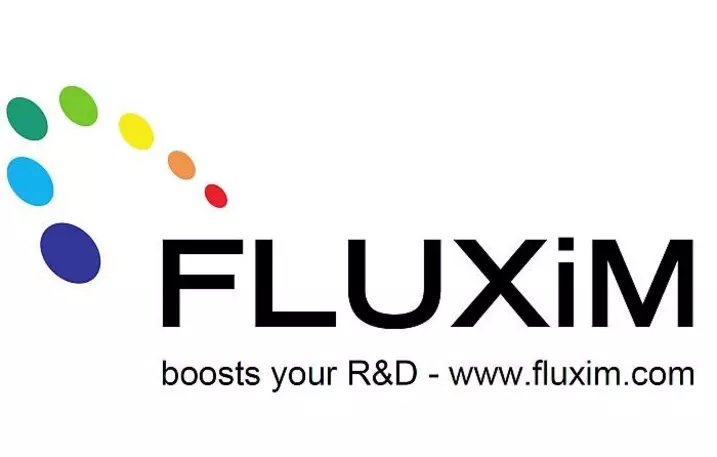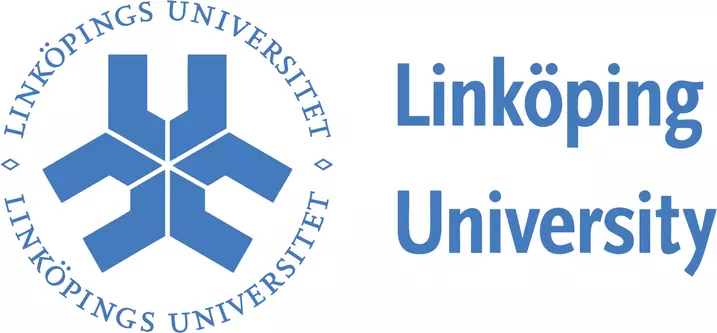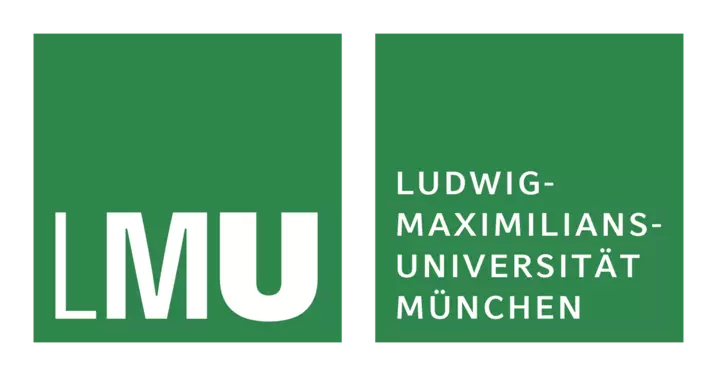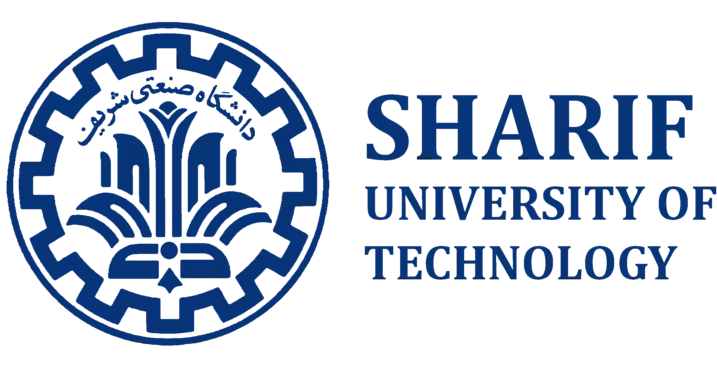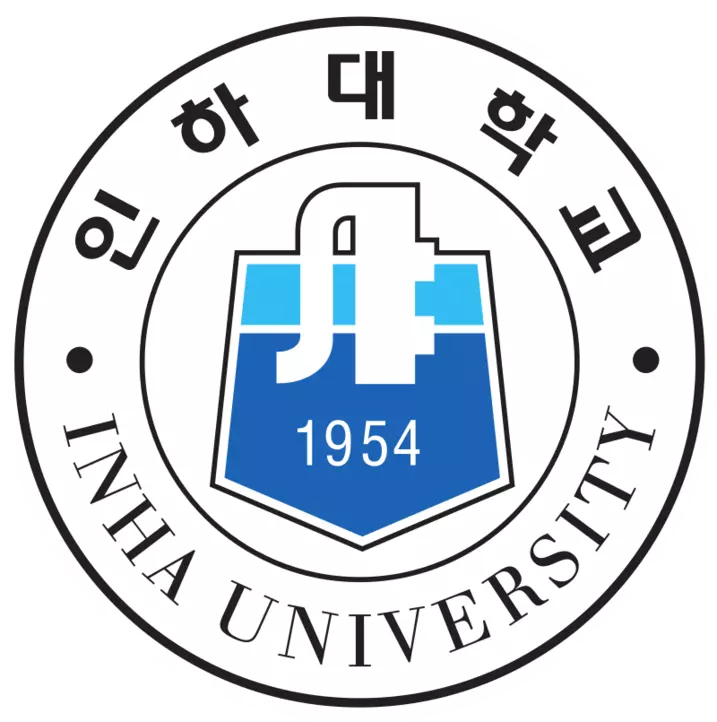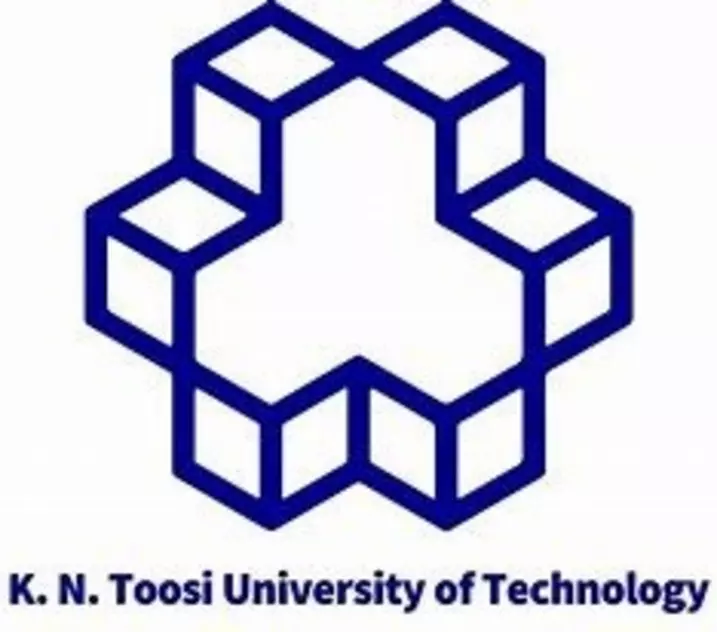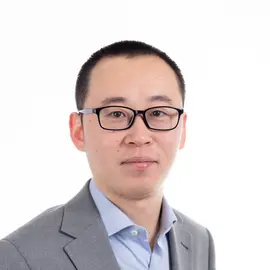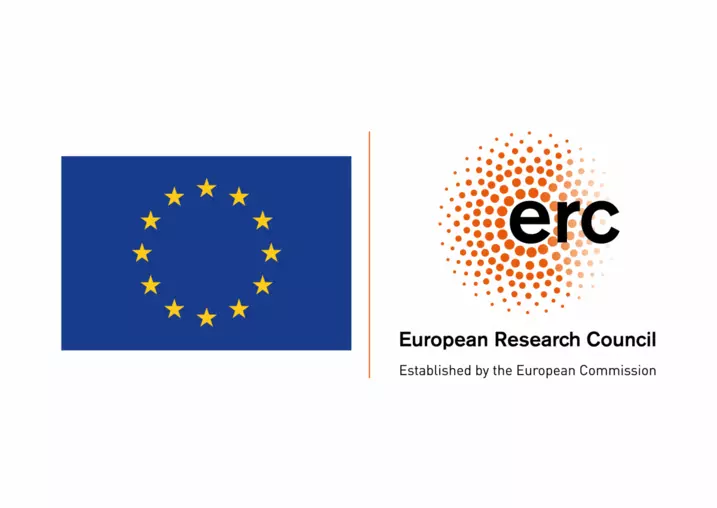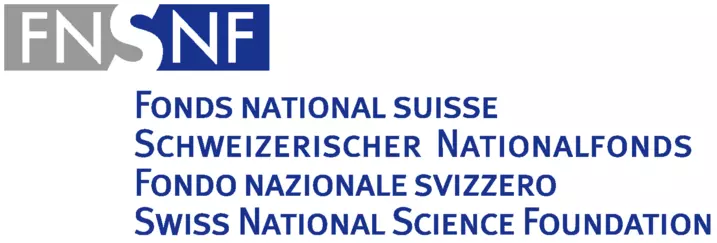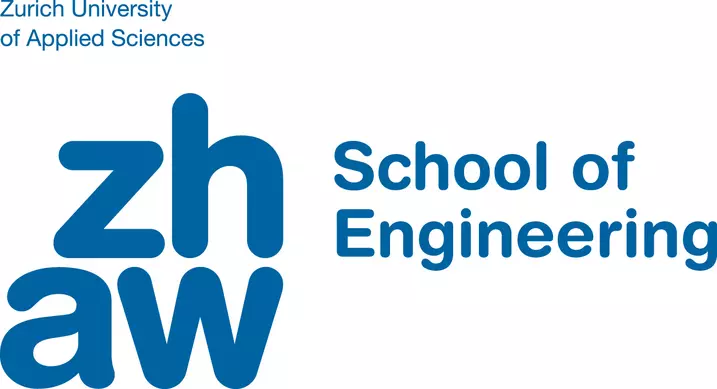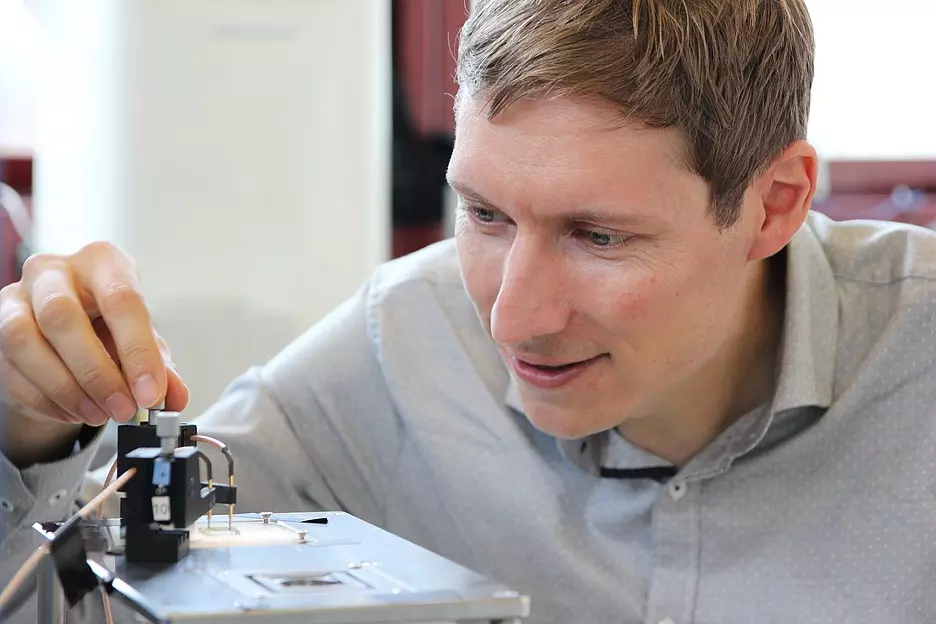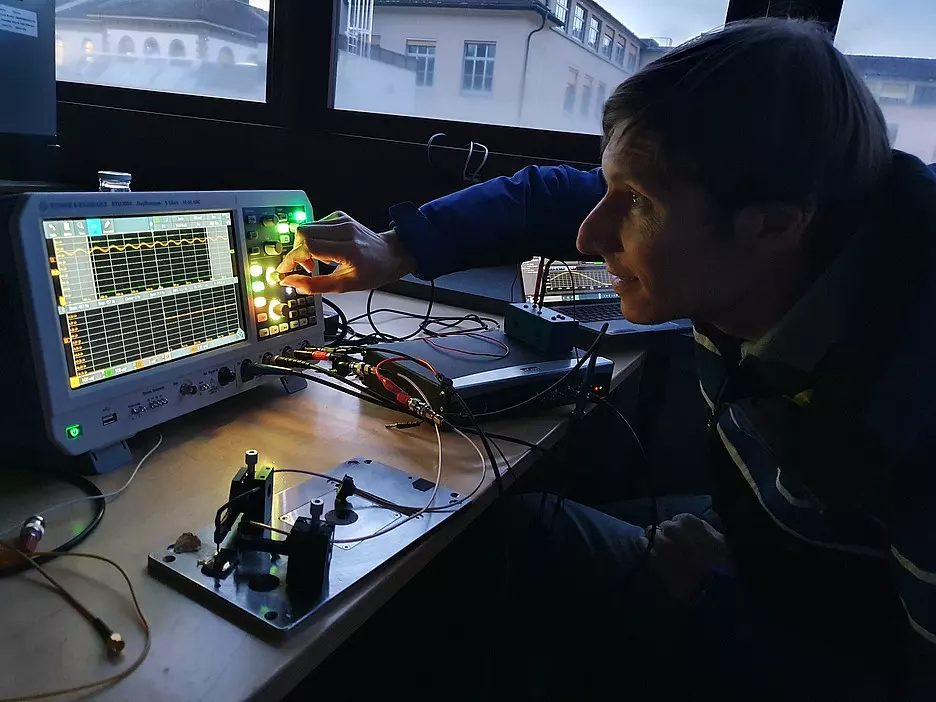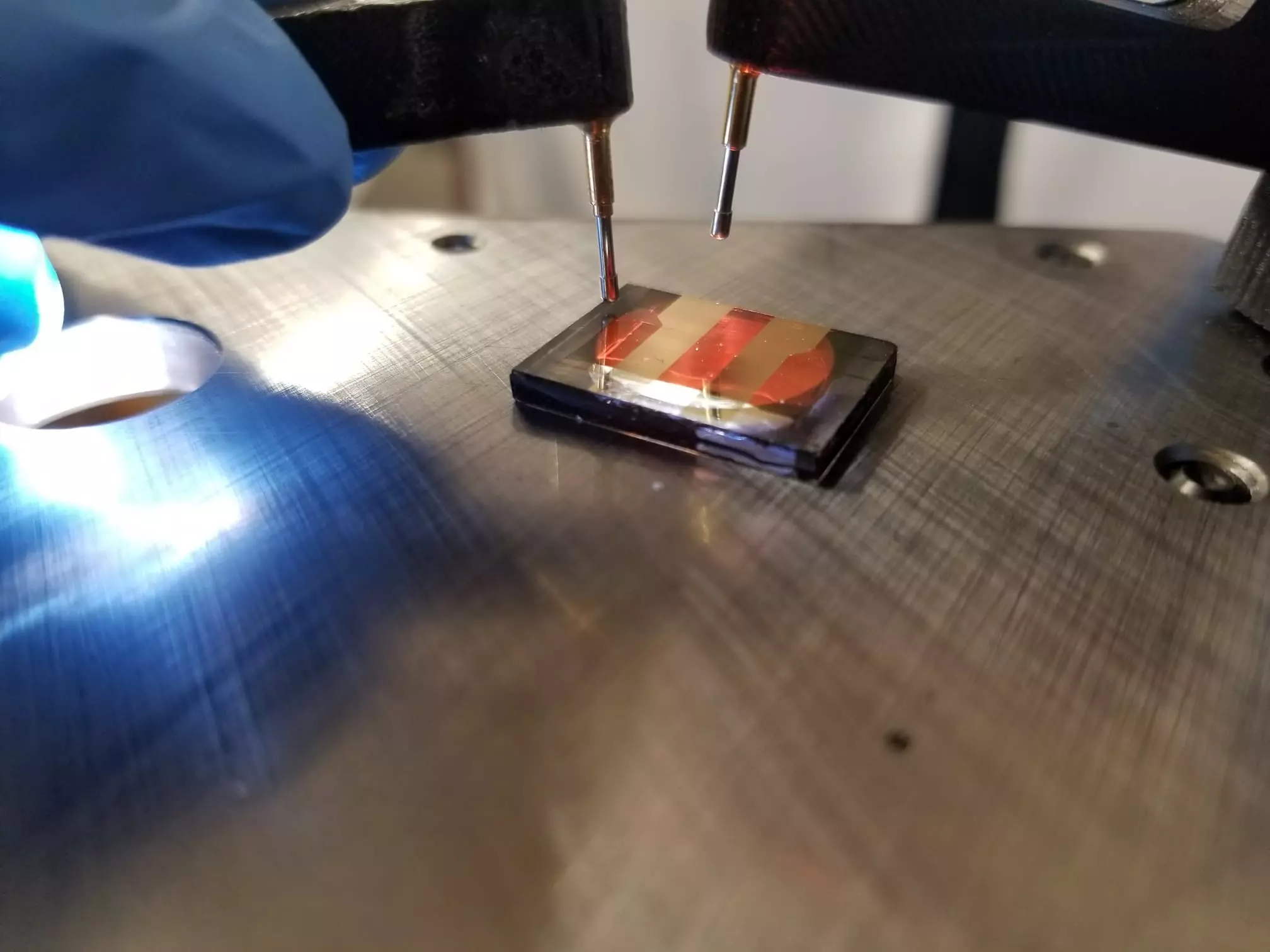Novel Semiconductor Devices Team
The Novel Semiconductor Devices group is part of the Organic Electronics and Photovoltaics activities at the ZHAW Institute of Computational Physics. We perform basic and applied research in the field of novel semiconductors. Our goal is to establish a strong link between device functionality and performance using advanced characterization and modelling approaches. Currently, efficiency and stability limiting processes in perovskite solar cells and the mixed ionic-electronic conductivity of metal-halide perovskites are our major interests.
News
Research Topics
- Perovskite Solar Cells and Optoelectronic Devices
- Organic Photovoltaics
- Device Physics & Simulation
- Mixed Ionic-Electronic Conductors
- Advanced Optoelectronic Characterization

"Our motivation for doing research is curiosity driven - a curiosity, not as an end in itself, however, for benefiting humankind. Therefore working at the edge of basic research and applied science is so exciting."
Wolfgang Tress, head of Novel Semiconductor Devices group
Research
We work on novel semiconductors employed in devices for energy harvesting and beyond. Our major goal is to advance understanding of such devices to enable rational material and device design for higher performance. We aim for unraveling links between device functionality and underlying fundamental processes in the employed materials and at interfaces in layer stacks. Our approach is to combine targeted variations in device fabrication with tailored characterization methods and with theoretical work. Most exciting for us is to develop novel ways of characterizing devices or applying common methods with new unconventional interpretations.
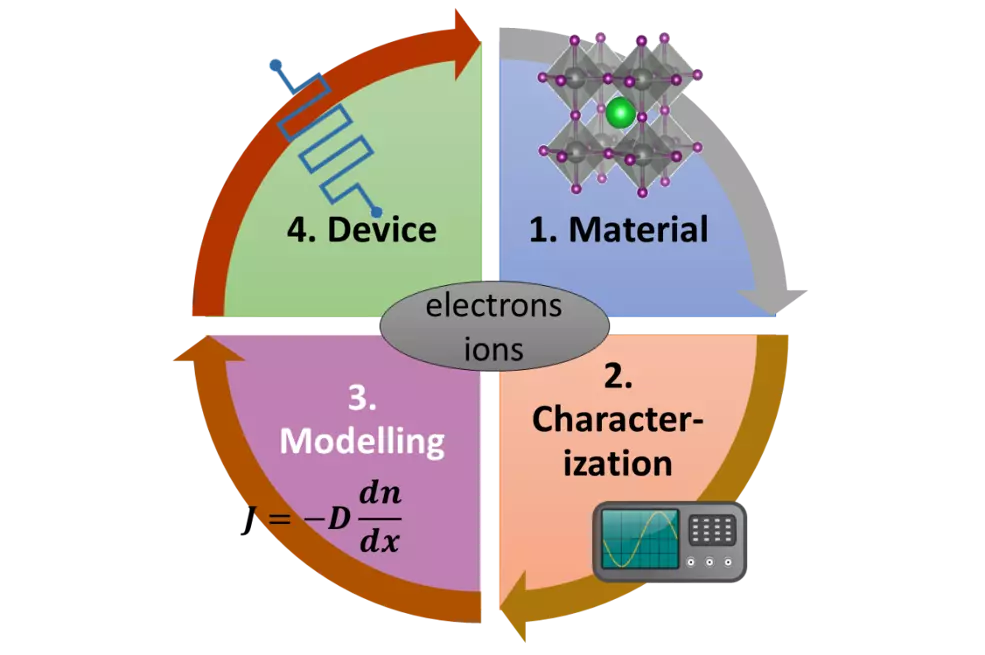
In our ERC funded project Defect Engineering, Advanced Modelling and Characterization for Next Generation Opto-Electronic-Ionic Devices (OptEIon) we investigate defects in metal halide perovskites, as defects are the key to understanding many processes such as efficiency losses and degradation phenomena. We are mainly interested in mobile ionic defects, which lead to an ionic conductivity. We intend to characterize them deeply and include these parameters in our numerical device models. Additionally, we use various macroscopic characterization methods (current-voltage-intensity-temperature data, impedance spectroscopy, current and voltage transients) to unravel the electro-optics of the devices. To gain microscopic insights, we use micro-spectroscopy and SPM techniques. To further advance and complement our physics-based modeling, we look into the opportunities of employing machine learning. With the gained knowledge, we want to fabricate devices exploiting the mixed ionic-electronic conductivity in memristive devices.
Running projects
Collaborators
Group Photo 2024

People

ZHAW
School of Engineering
Forschungsschwerpunkt Organic Electronics & Photovoltaics
Technikumstrasse 71
8400 Winterthur
Scientific coworkers and postdocs
PhD students
Visiting scholars
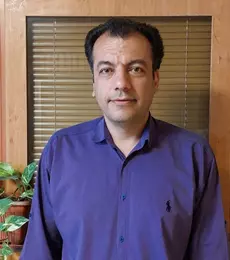
Mahmoud Samadpour
Academic guest: Leading House South Asia and Iran
K. N. Toosi University of Technology
from January 2024

Kazem Meraji
Research engineer: Optimization and automation of optoelectronic equipment
from December 2022

Nasim Kabir
Scholarship
Ph.D. student at University of Tehran
from May 2022
Alumnae

Fatemeh Heidari Gourji
Scholarship
Ph.D. student at Faculty of Engineering and Science of Western Norway University of Applied Sciences
March 2023 - Mai 2023

Joanna Kruszyńska
Scholarship
Ph.D. student at Institute of Physical Chemistry of Polish Academy of Sciences
March 2023
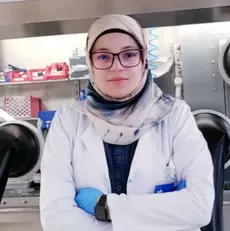
Hajar Moumine
Swiss Government Excellence Scholarship
September 2021 - January 2023

Teepich Houtae
Intern from University of Bordeaux
January 2022 - February 2022
We and you
Research of the 21st century is a highly collaborative and interdisciplinary endeavor. Join us!
For students
We offer topics for internships or theses in materials science, physics, and electrical engineering. They span from device fabrication to characterization to simulation. A futher possibility, especially for students in mechanical engineering or computer science is in the development of laboratory setups.
For visiting researchers
We are a very diverse group and happy to host visiting researchers from all over the world. We are happy to support excellent applicants for mobility scholarships such as the SNSF Swiss Postdoctoral Fellowships and the Swiss Government Excellence Scholarships.
For future employees
We are looking for PhD students who are interested in characterizing and modelling perovskite solar cells on the macro and nano scale. Currently, we have two openings:
PhD in Nanoscale Characterization of Perovskite Solar Cells
PhD in Electrical Modelling of Perovskite Solar Cells
For future collaborators
Collaborate with us! Be it informally or in a research or service project. We are always interested in contributing our expertise in the device physics and modelling of organic and perovskite semiconductor devices. For more information on our capabilities, see the equipment list below.
Equipment
We are part of the Organic Electronics and Photovoltaics (OEPHO) focus area. With our colleagues Kurt Pernstich, Gabriela Kissling Kemp, and Markus Regnat, who are kindly acknowledged for their great help, we operate a processing lab with all the equipment needed for fabrication of perovskite solar cells within gloveboxes. The OEPHO characterization lab is equipped with standard solar cell and LED characterization tools (solar simulator, EQE, potentiostat, and Fluxim tools such as Paios and Phelos). We operate a laser lab with equipment for optical spectroscopy. We are performing numerical device simulations using setfos and laoss from Fluxim.
(A detailed list will follow on a separate page.)
Featured Publications
A selection of some of our most recent articles with a little bit of background on their "(hi)story". A full list can be found here.
Roadmap on commercialization of metal halide perovskite photovoltaics
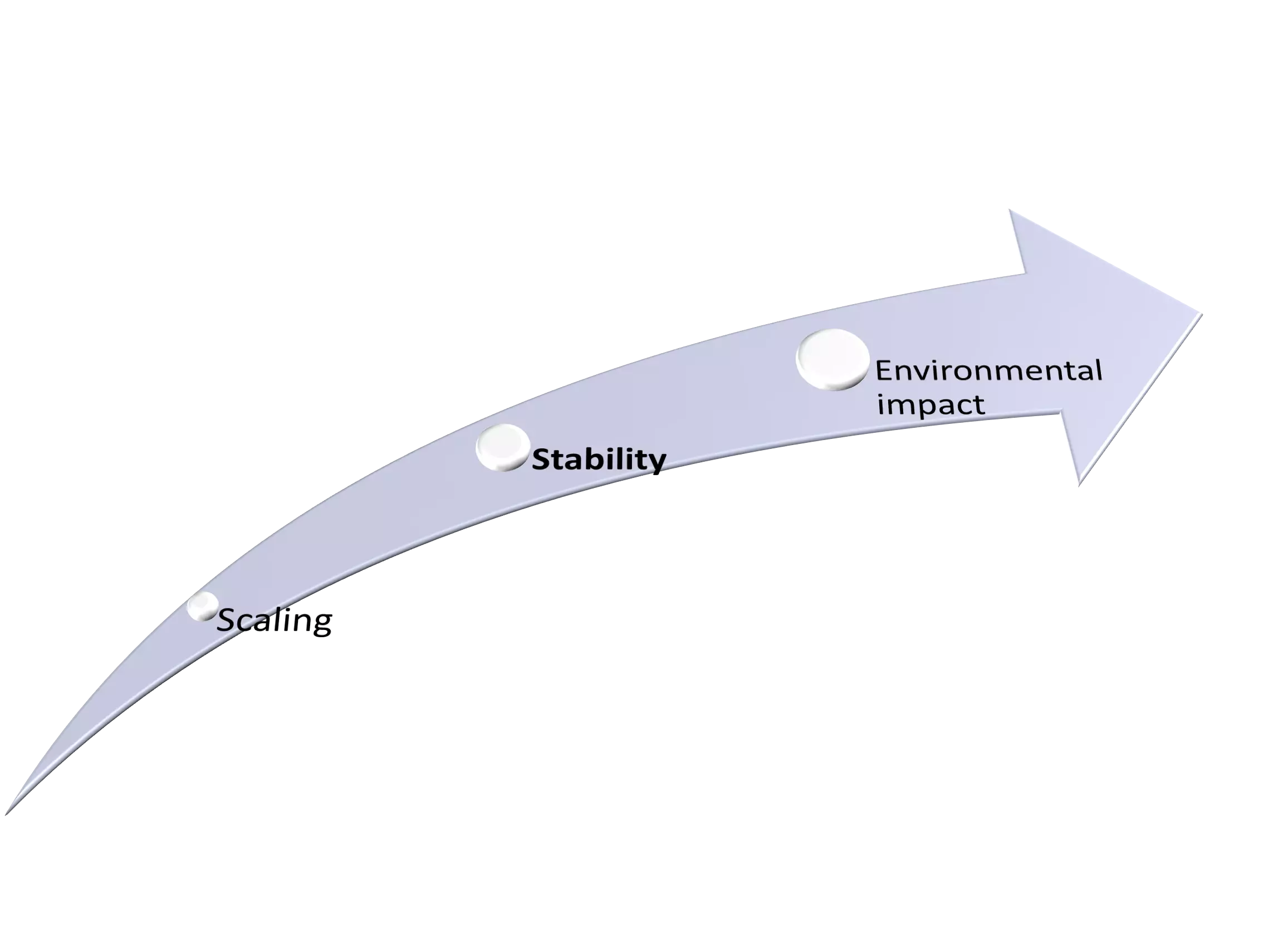
This huge piece of work covers various aspects towards commercialization of perovskite photovoltaics including upscaling, stability, and environmental impacts. The 24 subsections address the status, current and future challenges and advances in science and technology to meet the challenges. Firouzeh contributed a section regarding thermal stability of the perovskites.
Read the full paper (open access): Shien-Ping Feng et al 2023 J. Phys. Mater. 6 032501.
Mobile ions determine the luminescence yield of perovskite light-emitting diodes under pulsed operation
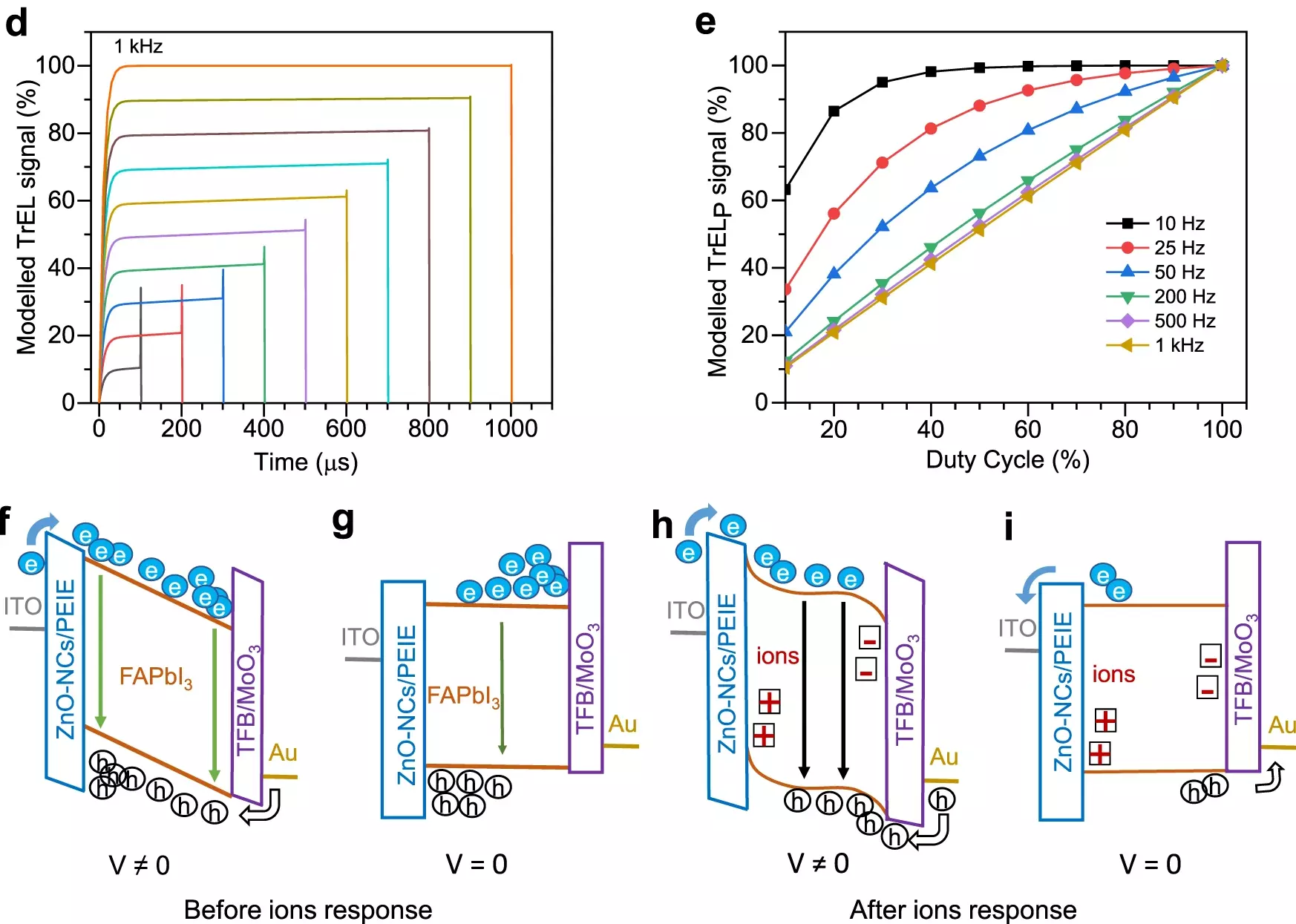
In this collaboration with Naresh Kumar from Feng Gao's group in Linköping we studied the peculiar behavior of of perovskite LEDs under pulsed illumination. Naresh observed that the electroluminescence yield depends linearly on the on-time of the rectangular voltage pulse, which we found unprecedented and at the same time intriguing. We set up a simple mathematical model that can describe this peculiar behavior. It turned out that the duty cycle is the decisive criterion and that mobile ions that modify recombination rates are the suspects behind the phenomenon. Our description of the duty-cycle dependence of the electroluminescence yield complements the overshoot phenomenon that has been observed on perovskite solar cells by our colleagues in Vilnius a few years earlier.
Read the full paper (open access): Kumawat, N. K., Tress, W. & Gao, F. Mobile ions determine the luminescence yield of perovskite light-emitting diodes under pulsed operation. Nat Commun 12, 4899 (2021).
The Bottlenecks of Cs2AgBiBr6 Solar Cells: How Contacts and Slow Transients Limit the Performance
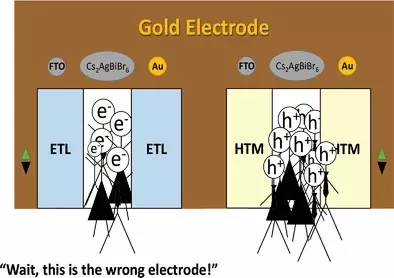
In this collaboration with Maximilian Sirtl from the Bein group we investigated efficiency limiting processes in these double perovskite solar cells. Compared to the lead-halide perovskites, almost everything is different in this material. Absorption features are narrow instead of broad, emission features, however, are broad instead of narrow and strongly red shifted. Not even the open-circuit voltage can be easily analyzed based on the reciprocity between electroluminescence and photovoltaic quantum efficiency, an approach that works always well for the lead-based devices. Our conclusion is that beyond the material-intrinsic issues such as a much too high bandgap, the contacts are further culprits for the low efficiency. Furthermore we concluded that questions remain unresolved regarding this material.
Read more here and the full paper (open access): Sirtl, M. T., Ebadi, F., Gorkom, B. T. van, Ganswindt, P., Janssen, R. A. J., Bein, T. & Tress, W. The Bottlenecks of Cs2AgBiBr6 Solar Cells: How Contacts and Slow Transients Limit the Performance. Advanced Optical Materials 9, 2100202 (2021).
When photoluminescence, electroluminescence, and open-circuit voltage diverge – light soaking and halide segregation in perovskite solar cells
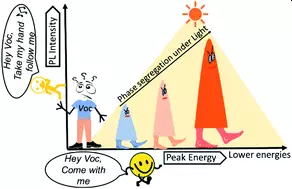
This work still started at EPFL dragged along for years and was stuck in the review process for long. Firouzeh made the discovery that during light-soaking the photoluminescence and the electroluminescence spectra do not necessarily coincide any more as they commonly do for metal halide perovskites. This triggered our interest and we studied this phenomenon in more detail with focus on mixed halide compositions with phase segregation. We were excited seing photoluminescence, electroluminescence and the expected Voc diverge during light soaking. At that time, the low-gap phase was seen as reason for the low Voc of devices with high Br-content. We found that the decrease of Voc is not directly correlated with the formation of this low-gap phase but a rather high non-radiative recombination rate in these compositions and devices already prior to phase segregation. This finding is in nice agreement with what had been published in the meantime.
Read the full paper: Ebadi, F., Yang, B., Kim, Y., Mohammadpour, R., Taghavinia, N., Hagfeldt, A. & Tress, W. When photoluminescence, electroluminescence, and open-circuit voltage diverge – light soaking and halide segregation in perovskite solar cells. J. Mater. Chem. A (2021).
